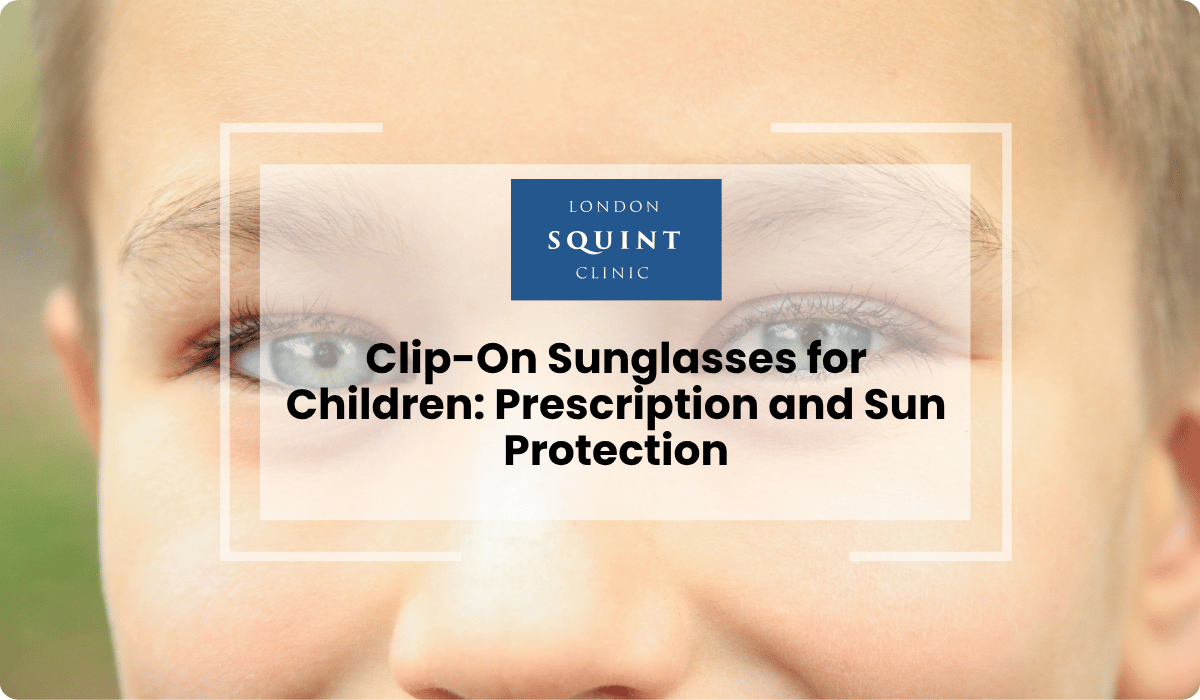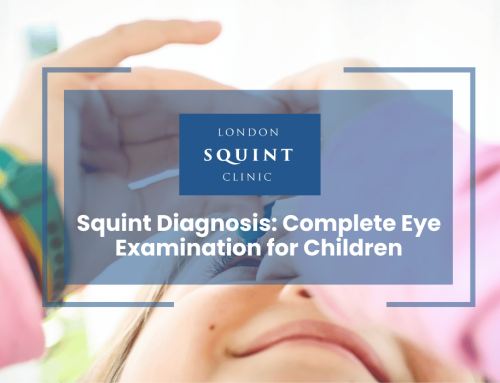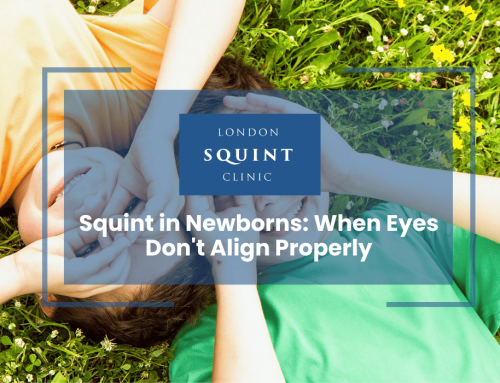Clip-On Sunglasses for Children: Prescription and Sun Protection
Essential Insights for Protecting Children’s Vision
Children’s eyes are more vulnerable to UV damage than adults’, with up to 80% of lifetime UV exposure occurring before age 18, making consistent eye protection crucial for long-term vision health.
Clip-on sunglasses offer a cost-effective, practical solution for children who wear prescription glasses, eliminating the need for multiple pairs of eyewear while providing essential UV protection.
When selecting sun protection for children, prioritize 100% UVA/UVB protection, adequate coverage, and impact-resistant materials like polycarbonate, regardless of whether using clip-ons or dedicated sunglasses.
Involving children in selecting their eyewear, establishing consistent routines, and providing positive reinforcement significantly increases the likelihood of regular use of protective eyewear.
Table of Contents
- Why Children Need UV Protection for Their Eyes
- Understanding Clip-On Sunglasses for Prescription Glasses
- Benefits of Clip-On Sunglasses vs. Regular Sunglasses for Kids
- How to Choose the Right Clip-On Sunglasses for Children
- Do Children with Glasses Always Need Separate Sunglasses?
- Essential UV Protection Features for Children’s Eyewear
- Practical Tips for Getting Kids to Wear Sun Protection Glasses
- When to Consider Prescription Sunglasses Instead of Clip-Ons
Why Children Need UV Protection for Their Eyes
Children’s eyes are particularly vulnerable to ultraviolet (UV) radiation damage. Unlike adult eyes, children’s lenses are clearer and allow more UV light to reach the sensitive retina at the back of the eye. Research indicates that up to 80% of lifetime UV exposure occurs before the age of 18, making childhood protection crucial for long-term eye health.
UV exposure in children can lead to several eye conditions later in life, including cataracts, macular degeneration, and pterygium (a growth on the eye’s surface). The cumulative effect of UV damage begins in childhood, though symptoms may not manifest until adulthood. Additionally, children typically spend more time outdoors than adults, further increasing their exposure risk.
The World Health Organization recommends UV protection for children’s eyes whenever they are outdoors, regardless of the season. Even on cloudy days, up to 80% of UV rays can penetrate cloud cover and reach the eyes. This makes consistent eye protection essential for children’s vision health and development, particularly during peak UV hours between 10 am and 4 pm.
Understanding Clip-On Sunglasses for Prescription Glasses
Clip-on sunglasses are specialised attachments designed to convert regular prescription glasses into sunglasses. These accessories clip or magnetically attach to the frames of prescription eyewear, providing UV protection without requiring a separate pair of prescription sunglasses. For children who wear glasses, clip-ons offer a practical solution to the challenge of managing multiple pairs of eyewear.
Modern clip-on sunglasses come in various designs. Magnetic clip-ons use small magnets embedded in both the prescription frames and the clip-on attachment, creating a secure connection that aligns perfectly with the glasses. Traditional clip-ons use small clasps that physically grip the frame. Some newer models are custom-designed to match specific frame styles, offering a more integrated appearance.
The lenses in quality clip-on sunglasses provide comprehensive UV protection, blocking both UVA and UVB rays. Many options also offer polarisation to reduce glare, which is particularly beneficial for children participating in outdoor activities or sports. The tint options range from light to dark, with some clip-ons featuring photochromic properties that adjust to changing light conditions—an ideal feature for children who move between indoor and outdoor environments frequently.
Benefits of Clip-On Sunglasses vs. Regular Sunglasses for Kids
Clip-on sunglasses offer several distinct advantages for children who require prescription eyewear. The most significant benefit is cost-effectiveness—purchasing clip-ons is considerably less expensive than investing in a separate pair of prescription sunglasses, which can be particularly advantageous as children’s prescriptions frequently change during development. Additionally, clip-ons eliminate the need for children to switch between multiple pairs of glasses, reducing the risk of loss or damage that often occurs during transitions.
From a practical perspective, clip-ons are lightweight and compact, making them easy to store in a school bag or pocket when not in use. This portability encourages consistent use of sun protection, as they’re readily available whenever needed. For children with complex prescriptions, including those managing conditions like squint or amblyopia, maintaining the correct prescription is crucial—clip-ons allow children to retain their properly fitted prescription glasses while adding sun protection.
Another advantage is adaptability. As children grow and their prescription changes, only the primary glasses need updating, while the clip-on attachments can often be transferred to new frames of similar design. This adaptability makes clip-ons a sustainable option for parents managing the evolving vision needs of their children. For children involved in sports or active play, clip-ons can be quickly removed during indoor activities and reattached when heading outdoors, providing seamless protection without disrupting their activities.
How to Choose the Right Clip-On Sunglasses for Children
Selecting appropriate clip-on sunglasses for children requires careful consideration of several factors. First, ensure compatibility with your child’s existing frames—measure the width and shape of their glasses and look for clip-ons designed to fit those specific dimensions. Many optical shops offer clip-ons designed for particular frame styles, providing the most secure and aesthetically pleasing fit.
UV protection should be the primary consideration when evaluating lens quality. Look for clip-ons that offer 100% UVA and UVB protection, which should be clearly stated on the product. For children who participate in water sports or spend time near reflective surfaces like snow or water, polarised lenses are highly recommended as they reduce glare and improve visual comfort. Consider the lens tint as well—grey tints provide the most natural colour perception, while brown tints enhance contrast, which can be beneficial for outdoor sports.
Durability is particularly important for children’s eyewear. Choose clip-ons with sturdy attachment mechanisms that can withstand active play and frequent handling. Magnetic attachments often provide the most secure fit while being easy for children to manage independently. Finally, involve your child in the selection process—children are more likely to consistently wear sun protection if they like the appearance and feel comfortable with the clip-ons. Some manufacturers offer clip-ons in various colours or with decorative elements that appeal to younger wearers, potentially increasing compliance with sun protection recommendations.
Do Children with Glasses Always Need Separate Sunglasses?
Children who wear prescription glasses do not necessarily need separate prescription sunglasses if appropriate alternatives are utilised. Clip-on sunglasses provide an effective solution that combines the corrective benefits of prescription lenses with essential UV protection. This approach addresses both visual acuity needs and sun safety without requiring multiple pairs of prescription eyewear.
However, certain circumstances might warrant dedicated prescription sunglasses. Children who participate in water sports or activities where glasses might be easily dislodged may benefit from prescription sunglasses with secure straps. Similarly, children with high prescriptions or specific visual needs might experience better visual comfort with dedicated prescription sunglasses that are optimised for outdoor conditions.
The decision should consider the child’s lifestyle, activities, and specific visual requirements. For many children, clip-ons provide sufficient protection for general outdoor activities, while specific situations might call for specialised eyewear. Consulting with a paediatric ophthalmologist can help determine the most appropriate approach based on the child’s individual needs, taking into account factors such as age, prescription stability, and typical outdoor exposure patterns. The key consideration should always be ensuring consistent UV protection while maintaining optimal visual correction.
Essential UV Protection Features for Children’s Eyewear
When selecting sun protection eyewear for children, comprehensive UV blocking capabilities should be the foremost consideration. Optimal protection requires lenses that block 100% of both UVA and UVB rays—look for labels indicating “UV400” or “100% UV protection.” This level of protection shields the delicate structures of children’s developing eyes from harmful radiation that can contribute to long-term damage.
Lens size and coverage are equally important factors. Children benefit from larger lenses and wrap-around styles that minimise peripheral light exposure. Standard flat lenses may allow UV rays to enter from the sides, top, or bottom of the frames. Wraparound designs or lenses with sufficient coverage reduce this risk by providing a more comprehensive protective barrier against UV exposure from multiple angles.
Polarisation offers additional benefits beyond basic UV protection. Polarised lenses reduce glare from reflective surfaces such as water, snow, and pavement, improving visual comfort and reducing eye strain during outdoor activities. This feature is particularly valuable for children participating in sports or spending time near reflective environments. Impact resistance is another crucial consideration for active children—polycarbonate lenses offer superior impact resistance while maintaining excellent optical clarity and inherent UV-blocking properties, making them an ideal choice for children’s eyewear, whether in clip-on form or as dedicated sunglasses.
Practical Tips for Getting Kids to Wear Sun Protection Glasses
Encouraging consistent use of sun protection eyewear requires strategic approaches tailored to children’s developmental stages. For younger children, making sun protection a non-negotiable routine, similar to applying sunscreen, establishes healthy habits early. Create simple rules like “outside time means eye protection time” and model this behaviour yourself—children are more likely to adopt practices they regularly observe in adults.
Involving children in the selection process significantly increases compliance. Allow them to choose between appropriate options, focusing on colours, styles, or features they find appealing. For clip-ons specifically, demonstrate how they work and practice attaching and removing them together until your child feels confident managing them independently. This sense of ownership and mastery often translates to greater willingness to use them consistently.
Positive reinforcement proves more effective than criticism when encouraging protective behaviours. Praise your child when they remember their eye protection without prompting, and consider creating a reward system for consistent use over time. For reluctant children, explaining the importance of eye protection in age-appropriate terms can help—younger children might respond to simple explanations about “protecting your special eyes,” while older children can understand more detailed information about UV damage and long-term eye health. Additionally, storing clip-ons in easily accessible locations, such as attached to backpacks or in dedicated cases kept with other outdoor essentials, increases the likelihood they’ll be used consistently during outdoor activities.
When to Consider Prescription Sunglasses Instead of Clip-Ons
While clip-on sunglasses offer practical benefits for many children, certain circumstances warrant consideration of dedicated prescription sunglasses. Children with high or complex prescriptions may experience better visual clarity and comfort with prescription sunglasses specifically optimised for their visual needs. This is particularly relevant for children with significant astigmatism or those requiring prism correction, where the alignment and optical centres of lenses are critical factors in visual performance.
Active participation in water sports or high-impact activities presents another scenario where prescription sunglasses might be preferable. Sports-specific prescription sunglasses with impact-resistant frames, secure straps, and specialised lens coatings provide better protection during these activities than regular glasses with clip-ons. For children who spend extended periods outdoors—such as those attending outdoor camps or participating in regular outdoor sports—the convenience of dedicated sunglasses may outweigh the benefits of clip-ons.
Children with photosensitivity conditions, including those with certain retinal disorders or albinism, often require specialised tints and consistent protection that may be better addressed through prescription sunglasses. Similarly, older children and teenagers who are becoming more image-conscious might prefer the aesthetic of dedicated sunglasses over clip-on attachments. When making this decision, consult with a paediatric ophthalmologist who can assess your child’s specific visual needs, lifestyle factors, and developmental considerations to recommend the most appropriate sun protection strategy. Remember that the ultimate goal is consistent protection—the best solution is the one your child will actually wear regularly.
Frequently Asked Questions
Are clip-on sunglasses safe for children’s eyes?
Yes, clip-on sunglasses are safe for children’s eyes when they provide 100% UVA and UVB protection (UV400). Quality clip-ons offer the same level of UV protection as standalone sunglasses while allowing children to maintain their prescription correction. Always verify the UV protection rating before purchasing, as inadequate protection can be worse than no protection by causing pupils to dilate without blocking harmful rays.
How do I know if clip-on sunglasses will fit my child’s glasses?
To ensure proper fit, measure your child’s existing glasses (width, height, and shape) and compare these measurements to the clip-on specifications. Many optical retailers offer clip-ons designed for specific frame styles or can recommend compatible options. Magnetic clip-ons typically require frames that can accommodate the magnetic attachment points. When possible, bring your child’s glasses when shopping for clip-ons to test the fit directly.
At what age should children start wearing UV protection for their eyes?
Children should begin wearing UV eye protection as soon as they spend time outdoors, ideally from infancy. Babies under 6 months should be kept out of direct sunlight, but older infants and toddlers should wear UV-protective sunglasses or hats with brims. For children who wear prescription glasses, clip-on UV protection can be added as soon as they begin wearing corrective lenses.
Can clip-on sunglasses be used for sports and active play?
Clip-on sunglasses can be suitable for moderate activity, but may not be ideal for high-impact sports or water activities. For casual play and everyday outdoor activities, secure clip-ons (especially magnetic versions) generally stay in place well. For competitive sports, swimming, or high-intensity activities, specialized sports sunglasses with prescription lenses and secure straps are typically more appropriate to prevent displacement or damage.
How often should I replace my child’s clip-on sunglasses?
Replace clip-on sunglasses if they show signs of damage to the lenses (scratches, cracks) or attachment mechanism, as these issues can compromise UV protection and fit. While clip-ons don’t need replacement with every prescription change (unlike prescription sunglasses), they should be reassessed whenever new frames are purchased to ensure compatibility. Quality clip-ons typically last 1-2 years with proper care, though this varies based on how frequently they’re used and how carefully they’re handled.
Do clip-on sunglasses provide the same protection as regular sunglasses?
High-quality clip-on sunglasses provide equivalent UV protection to regular sunglasses when they offer 100% UV400 protection. The primary difference is not in protection level but in coverage—clip-ons match the size and shape of the prescription frames, which may not provide as much peripheral coverage as wrap-around sunglasses. For comprehensive protection, look for clip-ons that cover the entire lens area and consider additional measures like hats with brims for maximum sun safety.
Find out if you are suitable for Double Vision Treatment
Not everyone is eligible for double vision surgery.
Find out if you could benefit from this life-changing surgery by taking the quick self-suitability quiz below:
Our most popular procedures

Hello, I’m Nadeem Ali
I’m one of the few eye surgeons in the world with 100% focus on Squint and Double Vision Surgery.
I have 24 years of eye surgery experience, and worked for 13 years as a Consultant at London’s renowned Moorfields Eye Hospital.
In 2023, I left the NHS to focus fully on treating patients from across the world at the London Squint Clinic. You can read more about me here.
There’s lots of information on the website about: squint surgery, double vision surgery and our pricing.
The most rewarding part of my job is hearing patients tell me how squint or double vision surgery has changed their lives. You can hear these stories here.
Mr Nadeem Ali
MA MB BChir MRCOphth FRCSEd(Ophth)





